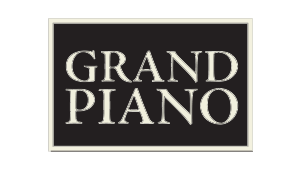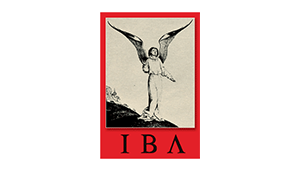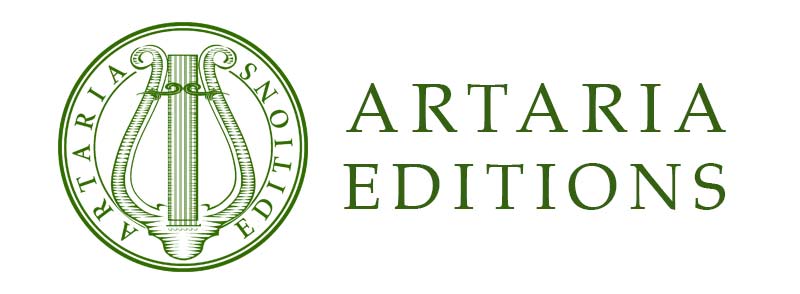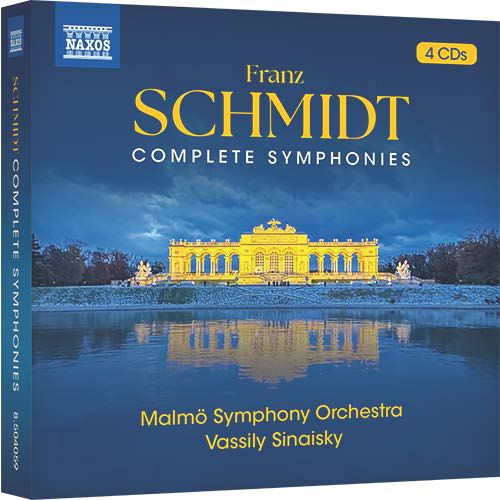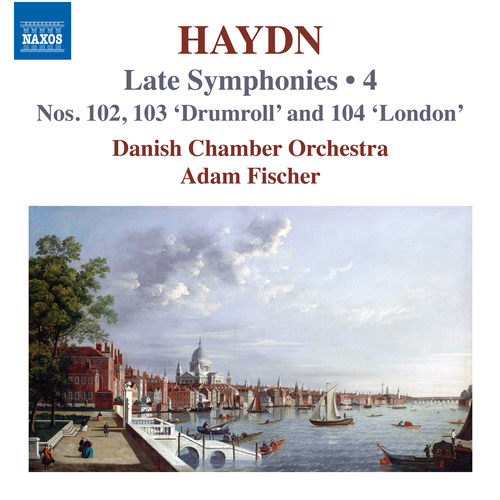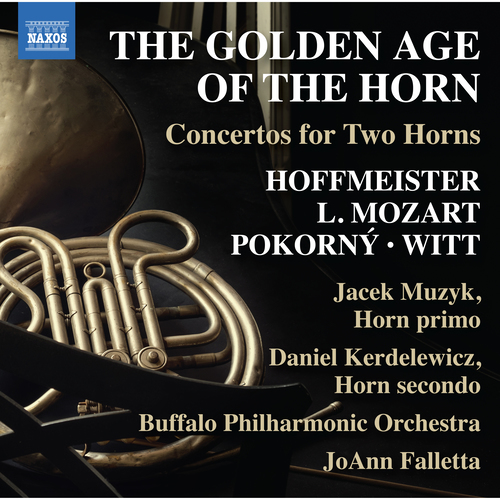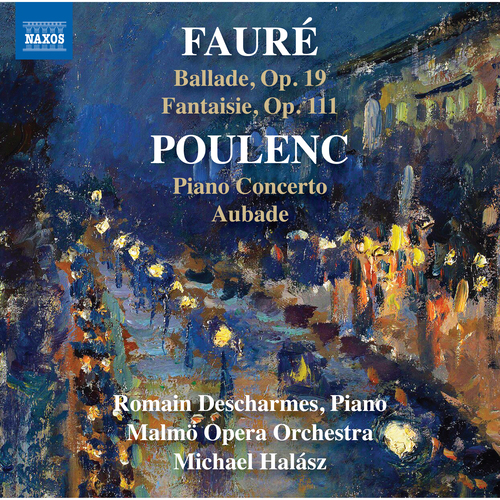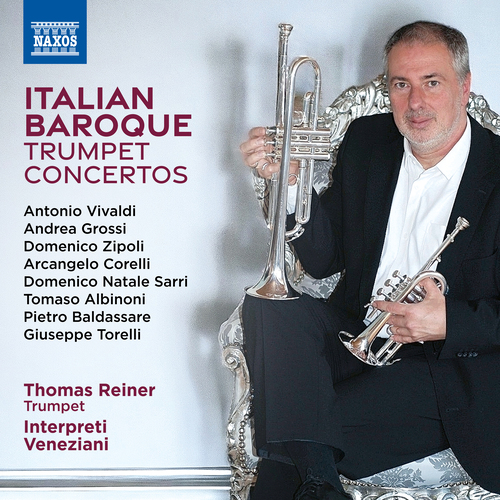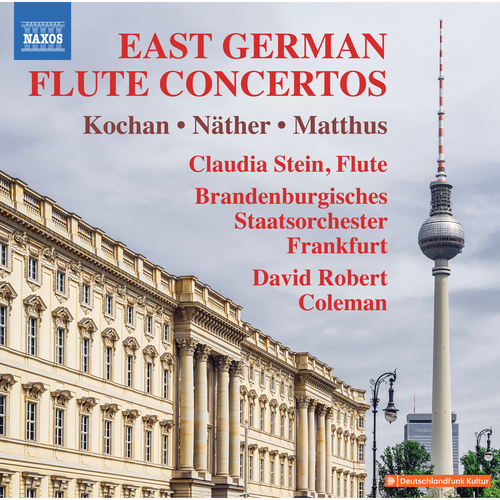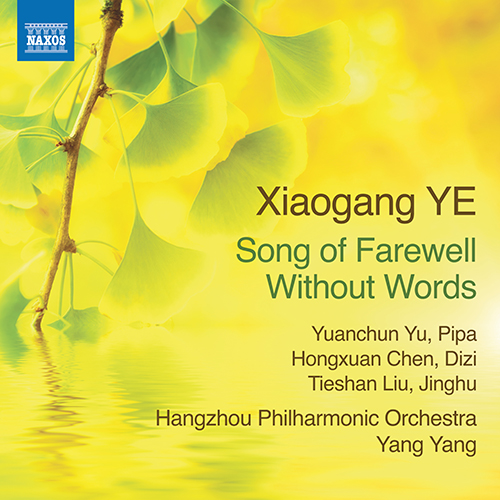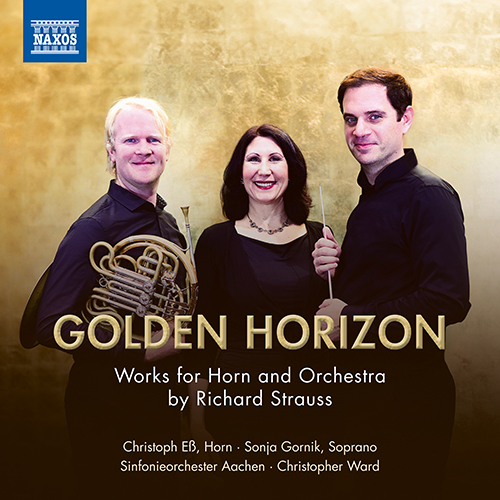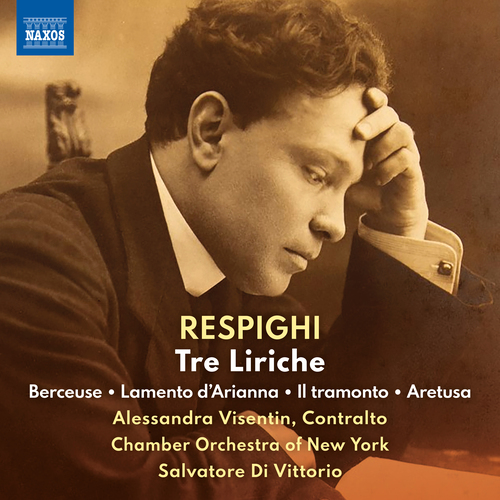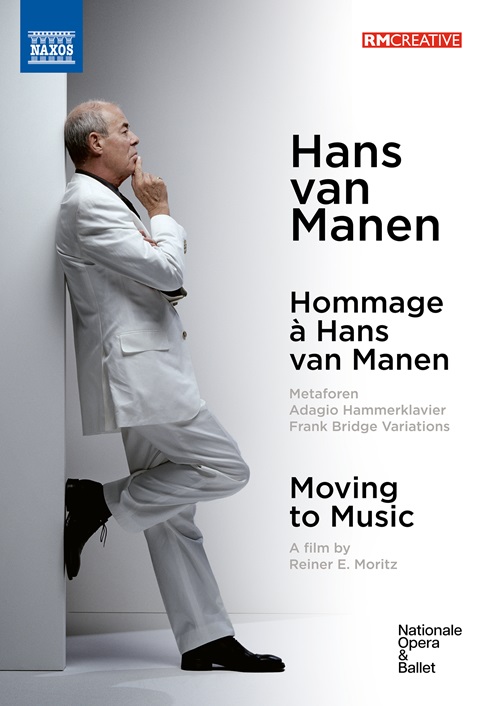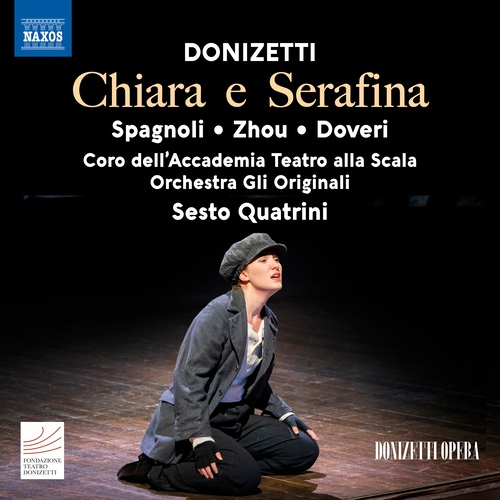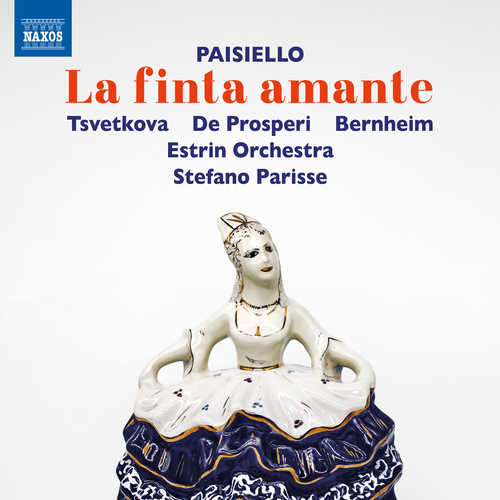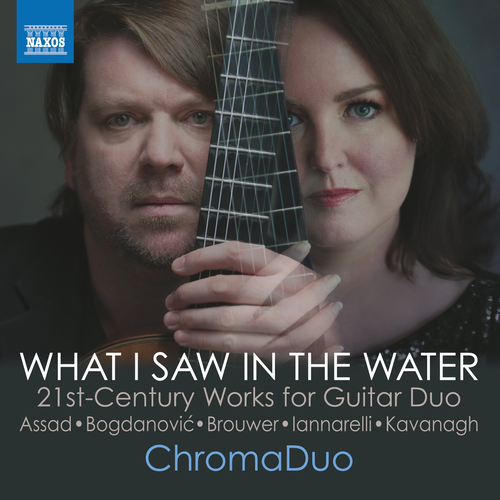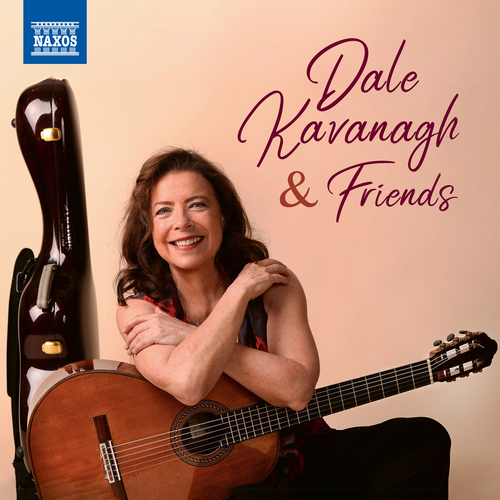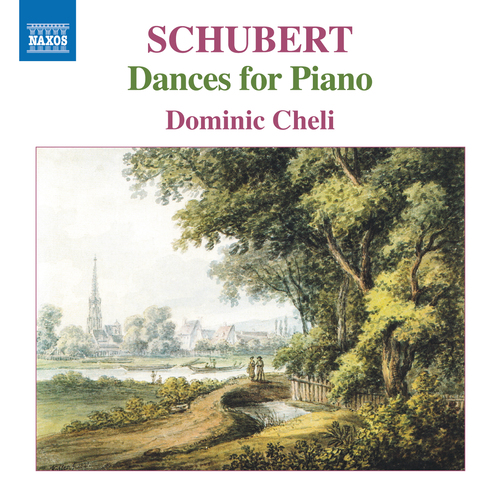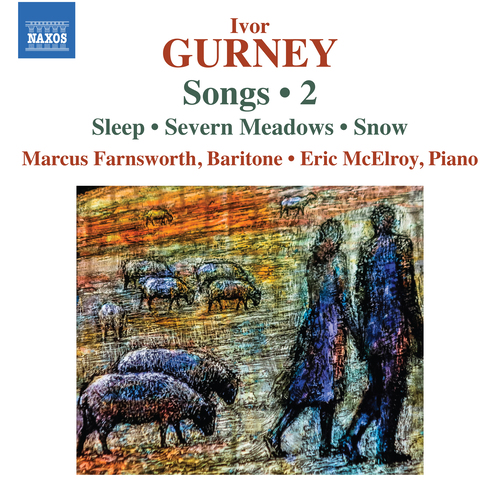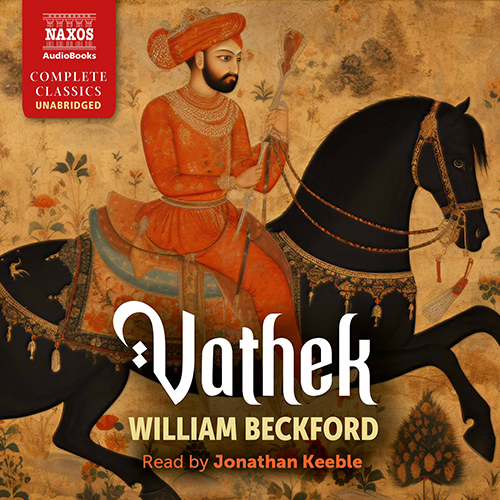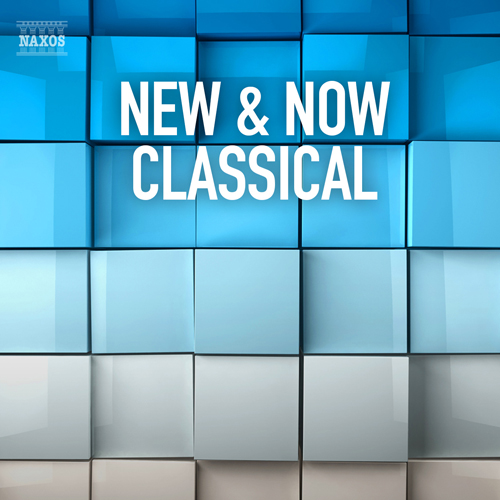The October NEW ON NAXOS features the 4-disc boxed set of Franz Schmidt’s Complete Symphonies with the Malmö Symphony Orchestra under the baton of Vassily Sinaisky, released in celebration of the composer’s 150th anniversary. Gramophone admired Vol. 3 (8.572119) for being ‘mightily impressive’ while BBC Music Magazine praised Vol. 4 (8.572118): ‘Vassily Sinaisky’s masterly structural command and choice of tempos… Altogether a radiant end to a revelatory cycle.’
Other highlights include an audiovisual homage to the great Dutch choreographer Hans van Manen featuring director Reiner E. Mortiz’s documentary Moving to Music, which covers Manen’s life and works, as well as three complete ballets by Manen; ChromaDuo’s contemporary works for guitar duo in What I Saw in the Water; the 24th instalment of the English Song Series with the second volume of Ivor Gurney’s songs ; and more.
![]() Watch our monthly New on Naxos video to sample the highlighted releases of the month.
Watch our monthly New on Naxos video to sample the highlighted releases of the month.
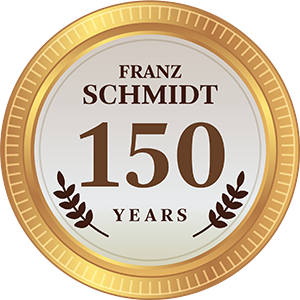
Franz Schmidt’s symphonies cover the years 1899 to 1933 and chart a development securely within the Austro-German tradition. The contrapuntal mastery of Symphony No. 1, the command of variations in No. 2, the harmonic sophistication of No. 3, and the best-known of the quartet, the elegiacal and highly Romantic No. 4, all evoke a distinctive sound world and contain powerful expressive features. The accompanying orchestral works, including the popular Intermezzo from the opera Notre Dame, are equally powerful examples of his art. The recordings in this set received high praise with BBC Music Magazine lauding Vassily Sinaisky’s ‘revelatory cycle’.
The fourth volume in this series culminates in Haydn’s grandest symphonies, written during his second, triumphant visit to London. The works possess increased artistic weight and mark a transition from Viennese Classicism to Romanticism. In their profuse thematic writing, lyricism, wit and peasant-like evocations – some said to be rooted in Croatian melodies – they offer a kaleidoscopic tour-deforce of his symphonic genius at the zenith of his achievement. Once again, Adam Fischer and the Danish Chamber Orchestra employ the best technical performance practice in their recordings.
INCLUDES A WORLD PREMIER RECORDING
The 18th century established the horn as a solo instrument, with virtuoso players commissioning concertos throughout Europe. The technical demands required to play hand-stopped instruments meant that many such concertos have not surfaced until recently. An exact contemporary of Beethoven, Friedrich Witt makes athletic use of the horn’s range in his Concerto in F major, which is also a feature of the cat-and-mouse interplay in Hoffmeister’s Concerto No. 3 in E flat. Expressive lyricism is present in such works as Leopold Mozart’s elegant and refined Concerto for Two Horns in E flat major, while the graceful Larghetto in Pokorný’s Concerto for Two Horns in F major is framed by two exuberant outer movements.
There are fruitful contrasts in the works for piano and orchestra of these two French composers. Gabriel Fauré’s Ballade in F sharp major is graceful and serene but ends with a Lisztian flourish, whereas his neglected Fantaisie, though modestly orchestrated, is distinctive and characterful. Francis Poulenc, himself a gifted pianist, wrote his Piano Concerto for the Boston Symphony during his second American tour in 1949, full of alluring melodies and seductive orchestral colour. The ballet Aubade was composed for piano and 18 instruments with a scenario by Poulenc himself. It foreshadows the concerto while also revealing a Stravinskian influence.
INCLUDES A WORLD PREMIER RECORDING
The brilliant dynamism of Italian Baroque music is at its most virtuosic and thrilling in works featuring the solo trumpet, whether in original compositions or transcriptions. Albinoni’s astonishing ornamentations and the luminous dexterity of Vivaldi’s concerto both represent each composer’s distinctive character, heard alongside works by Corelli, Grossi, Zipoli, Baldassare and Torelli. Domenico Sarri’s Sinfonia a 5 is heard here in its world premiere recording. Thomas Reiner is an acknowledged exponent of this repertoire with his performance of German Baroque Trumpet Concertos (Naxos 8.551419) described as ‘first rate and spirited … an excellent protagonist’ by Fanfare magazine.
WORLD PREMIERE RECORDINGS
The three concertante works for flute and orchestra on this album are by composers who lived and worked in East Germany during the four decades of its existence. Günter Kochan, best known for his symphonic compositions, wrote an admired Concertino in 1964 that fuses succinctness with neo-Classical influence. Inspired by soloist Claudia Stein, Gisbert Näther’s Concerto from 2007 is characterised by teasing, fugitive gestures of a stylistically and technically diverse yet coherent nature. Composed in 1978, Siegfried Matthus’s Concerto is a striking example of his mature idiom in its use of serial elements and sonic innovations in the course of what proves to be an eventful and ever-changing relationship between soloist and orchestra.
WORLD PREMIERE RECORDINGS
Xiaogang Ye has been awarded numerous prestigious honours and is regarded as one of China’s leading contemporary composers. His interest in mysterious and beautiful plants has led him to write many pieces inspired by subtropical flora – The Faint Gingko, the oldest tree species in the world, represents an expression of Ye’s care and concern for nature. Heard here in a version without words, Song of Farewell is an opera with exquisite textures, beautiful melodies and refined orchestration, forming a unique work that delves into desire, inspiration in artistic creativity, and death, with extraordinary symphonic originality.
Richard Strauss is considered to be both the last ‘Classical’ composer and a champion of modernity. His wide-ranging output stands as a monument to one of the most successful and influential composers of the 20th century. His spirited and compact First Horn Concerto was the product of his teenage years, while the Second Horn Concerto came six decades later, echoing the expressively lyrical and dynamic character of its youthful predecessor. Both of these concertos share the chamber orchestra character of the Four Last Songs in its arrangement by Eberhard Kloke. The Andante in C major and Alphorn in E flat major, originally composed with piano accompaniment, are heard here in arrangements for chamber orchestra by Lars Opfermann.
* WORLD PREMIERE RECORDING OF COMPLETED ORCHESTRATION
This album presents a selection of works for voice and orchestra by Respighi. The composer first gained recognition for his orchestration of Lamento d’Arianna, the only extant music from Monteverdi’s lost second opera, L’Arianna, which garnered Respighi ecstatic reviews. The Berceuse is a touching, short lullaby for strings composed in 1902, while the Wagnerian Il tramonto and Aretusa, a precursor to the Fountains of Rome, are both based on the poetry of Shelley. Tre Liriche are three art songs originally set as separate works for mezzo-soprano and piano. On the personal invitation of Respighi’s great nieces, Salvatore Di Vittorio has restored and edited the Berceuse and Lamento and completed the orchestration of the Tre Liriche.
Guided by his idol George Balanchine, Hans van Manen has striven all his life to create meaning in his choreography. Alongside conversations with colleagues and collaborators, in the documentary Moving to Music, van Manen talks about his life and work, and from where his inspiration came in ballets that are charged with drama and eroticism. Also included are three complete works from Dutch National Ballet – the early Metaforen; Adagio Hammerklavier, which presents the slow movement of Beethoven’s Op. 106 sonata performed live on stage with three couples in various configurations; and Frank Bridge Variations, a late masterpiece that plays with balance and counterpoint to music by Benjamin Britten.
In 1822, the young Donizetti was engaged by La Scala to compose an opera. Chiara e Serafina was the outcome and the librettist was Felice Romani, a refined scholar but a notoriously slow and touchy worker. Consequently, Donizetti had barely twelve days to compose the whole work. Because of the incoherent plot, which concerns Don Meschino and his daughter Chiara who are kidnapped by Algerians, and the villainous Don Fernando who schemes to marry the nobleman’s younger daughter Serafina, the result was a fiasco. Donizetti’s music, however, is characterful and profuse with delightful duets, trios and ensembles.
WORLD PREMIERE RECORDING
Giovanni Paisiello enjoyed a considerable international reputation during much of his career, with 80 or more operas that presented a challenge to those of Mozart in Vienna. La finta amante was composed during Paisiello’s time at the Russian court of Catherine II and it soon became a triumph throughout Europe for its elegant and luminous music. With just three characters, captured forcefully by Paisiello’s innate sense of theatre, the comedy revolves around Camilletta who, alongside her boyfriend Gelino, deceives the older but wealthy Don Girone in games that inevitably lead to dangerous consequences.
WORLD PREMIERE RECORDINGS
ChromaDuo, one of the world’s finest guitar duos, have greatly expanded the repertoire through friendships with leading composers. The five works featured on this album, four of which were written specifically for ChromaDuo, are all composed by renowned classical guitarists. Simone Iannarelli contributes a promenade to seven iconic pictures by the artist Frida Kahlo, whereas the writer Margaret Atwood offers the creative spur to Leo Brouwer. Dušan Bogdanović has created a stylistic hybrid in his Sonata No. 2, Dale Kavanagh has fashioned a marine ghost story, and Sérgio Assad fuses Brazilian and French elements in his moving tribute to Roland Dyens.
Renowned as a soloist and as a member of the Amadeus Guitar Duo, Dale Kavanagh is one of the most prominent classical guitarists of her generation. With this album she not only plays solo works composed for leading guitarists all over the world, but is also joined by acclaimed and award-winning colleagues in duos such as the joyful Campanellas and the tragic The Ghost of Peggy’s Cove. Written as a celebration of the virtuoso artistry of three giants of the international guitar scene, Loaded covers a breathtaking range of emotion and technique.
Although it is known that Schubert did not often dance, he willingly played the piano for dances and parties, being only too keen to provide examples that fuelled the Viennese Waltz craze of the time. These light dances – including Waltzes and Ländler – are the focus of this album which features his masterful small-scaled Valses sentimentales. Including some earlier versions of the same works, this selection of 99 tracks contains many rare Schubert gems. All the waltzes here are beautifully balanced, attentive to key changes, and technically accessible to pianists. Also included is the Kupelwieser-Walzer transcribed in 1943 by Richard Strauss.
The English Song Series, Vol. 24
Songs, Vol. 2
Sleep • Severn Meadows • Snow
INCLUDES WORLD PREMIERE RECORDINGS
Ivor Gurney was a poet as well as a composer and was accomplished in a number of musical genres including song. With his intuitive approach to poetry he selected texts widely, from contemporaries to ballads, Elizabethan and Jacobean poets, and even set his own lyrics. This wide-ranging selection includes his masterpieces – among them Sleep and Severn Meadows – with several songs heard in their first recording. Marcus Farnsworth, First Prize winner in the 2009 Wigmore Hall International Song Competition, has been praised for his ‘superbly controlled baritone voice’ (Fanfare).
The New & Now playlist features all that is new and exciting in the world of classical music, whether it’s new music, new presentations or new performers. With more than 200 new releases each year, and artists from around the world, there is always something new to discover with Naxos.








